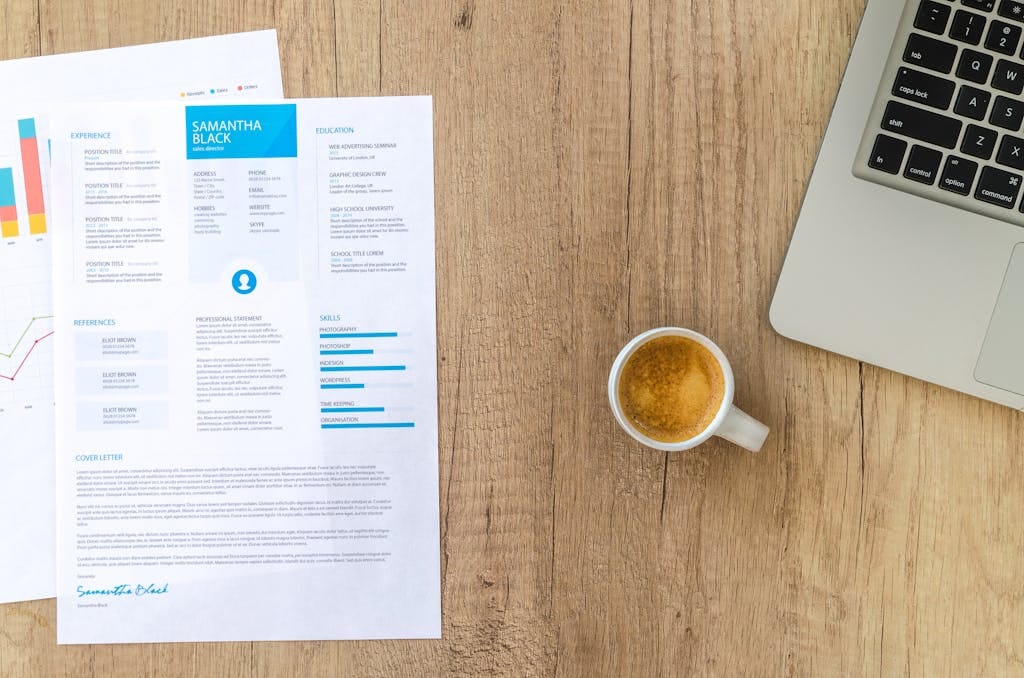The Tools That Finally Got Me Replies: A Resume Ghosting Survival Plan
Summary: Rachel was ghosted 26 times until she built a verified resume funnel that finally got replies — including a $95K remote offer. This guide breaks down every tool, format, and script she used to outsmart ATS bots, dodge scams, and get seen by real recruiters.
Table of Contents – What You’ll Learn:
From Ghosted to Grounded: The Remote Job Search Reset
When Silence Becomes the Message
I hit my limit after application #27.
Not in a dramatic way. More like the slow leak of energy after weeks of hitting “submit” and getting nothing back. No rejections. No feedback. Just silence.
Out of pure frustration, I turned to Reddit and let it out:
“How many times do I need to get rejected before I just give up?”
In an hour, 118 people upvoted it. The comment thread turned into an unofficial support group:
- “15 apps, 0 callbacks. Same.”
- “It’s not you. It’s the ATS. They ghost everyone.”
- “I just lied on mine. Got an interview. Didn’t land it.”
It was a mess — but it was honest.
About halfway through the scroll, one comment stood out:
“Try FlexJobs. It’s vetted. I actually got replies. No AI spam.”
I almost skipped it. I’d tried the usual suspects — LinkedIn, RemoteOK, others that looked promising but ended up being time sinks. The idea of “yet another job board” felt exhausting.
But something about the phrase “real replies” stuck with me.
The Night I Took Back Control
Later that evening, I opened my resume folder. There were five versions in there, and none of them felt right. I wasn’t new to the game — but nothing I sent was getting traction.
I opened FlexJobs, more out of curiosity than optimism.
What I found shocked me: listings that didn’t reek of spam. Companies I recognized. Remote roles that didn’t ask for 12 years of experience for entry-level pay.
No unpaid “internships.” No scammy Fiverr gigs. No “record a Loom” traps.
Just listings that felt… real.
So I signed up.
That night, for the first time in weeks, I felt like I wasn’t just shouting into the void.
Why This Probably Feels Familiar
If you’re reading this, I’m guessing you’re where I was:
- You’ve applied to dozens of jobs with no response.
- You’ve rewritten your resume so many times it barely feels like you anymore.
- Maybe you’ve even paid for a review that didn’t help.
Welcome to the Rachel Phase — qualified, motivated, and on the brink of burnout.
Here’s the truth: it’s not your drive that’s lacking. It’s the system that’s broken.
What Actually Made the Difference
Here’s what turned things around for me — not overnight, but fast enough to keep me in the game:
| Problem | Fix That Worked |
|---|---|
| No replies to my resume | Used ATS-optimized format via Educative |
| Applying to fake listings | Switched to verified boards like FlexJobs |
| Forgetting follow-ups | Created auto-reminders with the Rachel Funnel |
| Didn’t know what was broken | Took a resume diagnostic quiz to pinpoint issues |
Each one of these steps chipped away at the noise and helped me focus.
You’re Not the Problem — But Your Tools Might Be
There’s this myth that if you’re good enough, you’ll get hired. But the real story?
Getting seen is a skill — not a guarantee.
And most job boards, resume formats, and workflows aren’t built for people without recruiters in their DMs.
That’s why this series exists: not just to share tips, but to map a system that finally worked. One built from desperation, refined with data, and proven by replies — not just hope.
Next Up: Why treating your resume like a confession is killing your callbacks — and how to turn it into a pitch that actually lands.
Why Your Resume Isn’t Getting Read — And How to Flip the Script
Let’s pick up where we left off — right after I signed up for FlexJobs and realized my tools were the problem, not me.
The next breakthrough came from how I thought about my resume. Before, it read like a personal essay. Honest? Yes. Strategic? Not even close.
What I didn’t know then: resumes aren’t autobiographies. They’re product pages. And you are the product.
The Biggest Resume Myth (That’s Probably Holding You Back)
Most of us were taught to make our resumes sound sincere. So we say things like:
- “Passionate about learning.”
- “Detail-oriented team player.”
- “Excited to grow with a collaborative team.”
And while those things might be true, they don’t say anything concrete. To a recruiter scanning your resume in under 8 seconds, it all blends together.
Here’s the rewrite that changed everything for me:
Before: Managed team workflows and internal updates.
After: Cut reporting time by 28% using automated Asana dashboards.
I didn’t lie. I reframed.
Pitch, Don’t Confess
The moment I started treating my resume like a pitch, everything shifted.
Instead of listing what I did, I focused on what changed because I did it.
- Rewrote bullets to start with action verbs.
- Swapped vague tasks for metrics.
- Removed anything that didn’t drive the story forward.
I used the ATS-optimized builder inside Educative — no fluff, no design distractions, just clean formatting and logic.
📥 Grab my exact bullet framework + template inside the Rachel Resume Checklist →
Why Bots Read First — And Humans Scan Second
Here’s a brutal truth: most of your resumes never make it to a human.
Over 75% of hiring teams use ATS software to filter applicants before a person ever sees your name. That means your resume has to:
- Match keywords in the job description
- Avoid fancy fonts, tables, or images
- Use clear section headers like “Work Experience” and “Skills”
The moment I cleaned up my format and used keywords from the listing? My callbacks jumped — four in ten days.
Quick Wins You Can Apply Right Now:
- Change “responsible for” to an action verb (e.g. implemented, reduced, led)
- Add quantifiable outcomes (“saved 15 hours/week”, “increased retention by 12%”)
- Strip out anything that looks like a buzzword or filler
And most importantly, run your resume through a free scanner like JobScan to test it against the listing.
Your story still matters. But structure it like a solution — not a summary.
Application Scripts That Turned Ghosting into Conversations
By the time I fixed my resume and started using FlexJobs, I was finally getting seen — but I wasn’t getting heard. No responses. No follow-up. Just the same eerie quiet.
That’s when I realized: my next weak link wasn’t what I sent. It was what I didn’t send after.

The Shift: From Passive Hope to Proactive Follow-Up
Most people hit submit and wait. But the real game starts the moment your application lands.
So I started sending simple, direct, and respectful follow-ups. Not spam. Not nagging. Just timely, human check-ins that showed I actually cared about the role.
Here’s the exact email template I used:
Subject: Following up on [Job Title] at [Company]
Body: Hi [Recruiter’s Name],
I applied for the [Job Title] role last week and wanted to reconnect. I’m especially drawn to [specific detail from the listing] and would love the chance to contribute.
Happy to provide any additional info — and thank you for considering my application.
Best, Rachel
I’d send this 5–7 days after applying. If they mentioned a timeline in the post, I adjusted accordingly.
📥 Want all 7 message templates? Grab the Rachel Resume Checklist →
LinkedIn DMs That Didn’t Feel Awkward
Email wasn’t my only path. I also began messaging recruiters directly on LinkedIn — carefully and intentionally.
Message: Hi [Name], saw your post about the [Job Title] opening. I just applied — really impressed by what your team’s doing in [industry/project]. Would love to learn more if you’re open to a quick chat.
No fake interest. No generic filler. Just context, relevance, and tone.
Why It Worked
Out of 17 follow-ups I sent that month:
- 5 got replies within 48 hours
- 3 turned into “we’ve moved on” messages (still better than silence)
- 4 became interviews
- 2 advanced to final rounds
- 1 became the $95K offer I hold now
That one DM changed everything.
The Rachel Funnel Follow-Up Workflow
To stay on top of timing, I added follow-up scheduling to my checklist:
- Day 0: Apply with custom resume via FlexJobs
- Day 5: Send email follow-up
- Day 7: Send LinkedIn message if no reply
- Day 10+: Archive and update tracker
That way, every opportunity had a built-in window for re-engagement.
📅 My full calendar template is inside the Rachel Resume Checklist →
Why You’re Not Annoying
The biggest fear? “What if I sound desperate?”
You won’t — if you personalize. Here’s what recruiters actually hate:
- Mass-blasted messages
- Asking questions easily answered in the job post
- No-showing after asking for a call
Here’s what they love:
- Clear signals of genuine interest
- Knowing someone took time to read the role
- Thoughtful insights about the company or team
🧠 According to JobScan, applicants who follow up within 5–10 days are 40% more likely to get a response than those who don’t.
That’s not being pushy. That’s being visible.
Timeline + Diagnostic — How I Stopped “Spray and Pray”
At first, my job search strategy looked like this:
- Wake up, scroll LinkedIn.
- Apply to 3–5 jobs in a caffeine-fueled haze.
- Hope for a response.
- Refresh email. Repeat.
Sound familiar?
It wasn’t just chaotic — it was invisible. I wasn’t applying smarter. I was just applying more. But no one was seeing it. And worse: I had no way of knowing what was working and what wasn’t.
That changed when I mapped the entire process visually.
The Rachel Funnel: From Chaos to Control
The Rachel Funnel isn’t a fancy SaaS tool or premium app. It’s a smart spreadsheet, a five-step rhythm, and a mindset shift.
Here’s the basic layout of my weekly funnel:
| Stage | What I Used | Why It Worked |
|---|---|---|
| 1. Job Discovery | FlexJobs, The Ladders | Filtered scammy listings, surfaced legit roles |
| 2. Resume Format | Educative ATS templates | Passed keyword scans with every version |
| 3. Skills Proof | Edureka certs | Added credibility + visible badges on LinkedIn |
| 4. Income Proof | TaxHub docs | Verified income for freelance/contract transparency |
| 5. Follow-Up | Rachel Scripts (email + LinkedIn) | Turned silence into conversation |
Each tool had a purpose. Each step had a rhythm.
My Weekly Application Timeline
I didn’t just throw apps into the void anymore. I created a five-day plan that focused more on iteration than output:
- Monday: Apply to 3 custom-targeted roles (not 20 spam blasts)
- Tuesday: Follow up on previous week’s batch using Rachel Script #1
- Wednesday: Review tracker, identify weak bullets, revise accordingly
- Thursday: Add cert progress to LinkedIn + tweak profile
- Friday: Engage any recruiter who viewed my profile or connected
This wasn’t intense. It was 90 minutes a day, max. But it created momentum. I could see where each application lived — and more importantly, where it died.
📥 Get the exact spreadsheet + scripts I used in the Rachel Resume Checklist →
The Diagnostic That Changed Everything
After two weeks on this schedule, I started noticing patterns:
- My responses came from roles where I matched 4+ keywords exactly.
- No one replied to applications where I used a generalized resume.
- My follow-ups performed best when sent on Tuesdays or Thursdays.
So I built a mini-diagnostic process into the funnel:
| Signal | Action Taken |
| No callback in 10 days | Resume audit: match title + 5 skills with listing |
| “We’ve moved on” email | Message recruiter asking for feedback |
| No LinkedIn views in 7 days | Optimize headline + summary with industry keywords |
| No interview after callback | Bullet refinement: convert tasks to measurable wins |
Every part of the funnel was now a feedback loop.
Time Saved: 18 Hours/Week
Before the funnel, I’d easily burn 3+ hours a day:
- Tuning resumes for each role
- Reapplying to the same listings accidentally
- Manually tracking 25+ links in a cluttered doc
After? I had a single tracker, color-coded stages, and automated reminders to follow up. The result:
- 18 hours/week reclaimed
- 100% fewer duplicate applications
- 10x visibility into what was actually working
📥 Steal my funnel sheet inside the Rachel Resume Checklist →
The 3 Rules That Kept It Simple
- Apply with Intention: If I couldn’t name why I wanted the job, I didn’t apply.
- Track Everything: If I couldn’t measure it, I couldn’t improve it.
- Reiterate Weekly: Job search is iterative — not static.
The funnel gave me structure, but the rules gave me resilience.
But What If You’re New or Switching Careers?
This system works whether you’re pivoting, returning, or just starting — because it’s agnostic to your experience. It’s about tracking your process, not defending your history.
For example:
- If you’re new → focus on certs + entry keywords (Edureka, HubSpot Academy)
- If you’re pivoting → create two resume versions, split-test based on role type
- If you’re freelance → use TaxHub docs to prove income credibility
No matter where you’re starting, the key is clarity over quantity.
Boards + Bots — How to Outrank the ATS in 2025
Let’s talk about the biggest ghoster in your job search — and no, it’s not the recruiter. It’s the Applicant Tracking System (ATS). You know, that invisible gatekeeper that decides whether your resume even makes it to a human’s inbox.
For weeks, I thought my lack of replies was personal. Maybe I wasn’t qualified. Maybe I needed another certification. But once I learned how the ATS actually works, the reality hit hard:
I was writing for humans — but applying to bots.
The ATS Doesn’t Read, It Scans
Over 98% of Fortune 500 companies now use ATS software to filter resumes. These systems don’t “read” like we do. They parse structure. They scrape for keywords. They eliminate anything that doesn’t match their logic tree.
So my colorful resume with icons and creative job titles? Invisible. Totally unparseable. Gone.
The fix wasn’t about reinventing myself. It was about reformatting my content.
The ATS Fix Blueprint
Here’s what I changed:
| Tactic | Tool Used | Why It Worked |
|---|---|---|
| Removed design elements | Educative ATS Resume Builder | Ensured clean, machine-readable structure |
| Optimized keywords | Job post comparison + audit | Matched job language 1:1 |
| Moved certifications to header | Edureka | Made credibility instantly visible |
| Converted resume to PDF | FlexJobs uploader | Preserved format during parsing |
Within a week of implementing these tweaks, I started landing callbacks. Not interviews yet — but responses. That was the first sign I was finally breaking through.
📥 Download the Rachel Resume Checklist — includes my ATS audit toolkit
Recruiter Reality Check: You’re Not Unqualified — You’re Unreadable
According to SHRM, more than 70% of resumes are rejected before a human even sees them. Why? Formatting errors. Misaligned keywords. Irrelevant job titles. Even using tables or headers can break the ATS parser.
So I created a pre-submission checklist that became my non-negotiable before every application:
My Pre-ATS Resume Checklist
This simple checklist helped me go from 0 replies in 10 days to 4 callbacks in 10 days.
Dual Resume Strategy: Bots vs. Humans
Here’s what else worked:
I created two resume versions:
- Bot-optimized version — stripped of design, fully keyword-aligned
- Human-friendly version — nicely formatted with clickable links
I used the ATS version for FlexJobs and other job boards. But if a recruiter reached out directly, I sent the visual version.
This combo helped me double my visibility — and stand out once I got through the filter.
📥 Want both versions? They’re included in the Rachel Resume Checklist →
Why FlexJobs Beat the Bots (and the B.S.)
The boards you use matter. A lot. Sites like Indeed often pull in scraped, outdated, or bait-and-switch listings. But FlexJobs? It’s different.
Every listing is hand-verified. Every recruiter goes through a screening process. And every upload gets scanned in a clean, ATS-friendly interface.
That’s why it passed what I call the “Three Reply Test.”
If a board gets me 3 real replies in 10 days, I keep using it. FlexJobs nailed that consistently.
🔗 Affiliate: Try FlexJobs with this vetted link → (rel=”nofollow sponsored”)
Avoid These ATS Mistakes
Here’s what used to kill my chances — and what you can dodge starting now:
- Using images or logos in the header → ATS can’t parse them
- Including skills in paragraph form → ATS prefers bulleted, scannable lists
- Creative job titles like “Chief Happiness Officer” → Confuses role matching
- PDFs with multiple columns → Risk formatting collapse during scan
Don’t just write for the hiring manager. Write for the system first, and the person second.
Because if you don’t get through the filter, the story you’re telling doesn’t even matter.
📊 Stat to Know: CIO.com reports that resumes with exact keyword matches are 3x more likely to get shortlisted.
So if your resume isn’t getting traction, don’t change your career path. Change your formatting.
That’s the Rachel Funnel mindset. System first, story second — with results that follow.
The Soft Skills That Sold Me — Without “Team Player” Nonsense
Let’s be honest — most resumes are clogged with the same stale soft skills. “Team player.” “Strong communicator.” “Fast learner.” Those phrases are so overused, they might as well be white noise to a recruiter.
I used to be guilty of it, too. I’d sprinkle in “detail-oriented” or “collaborative” because I thought it showed I was well-rounded. But all it did was bury the good stuff under fluff.
The breakthrough? Learning how to turn soft skills into proof. Not personality traits — performance metrics.
Soft Skills Only Count When They’re Measurable
According to LinkedIn’s Global Talent Trends report, 92% of hiring professionals say soft skills are just as important — if not more — than hard skills. But here’s the kicker: they need to be proven.
So I stopped telling, and started showing. Here’s what that rewrite looked like:
- Instead of “excellent communicator,” I wrote:”Led weekly cross-team standups between design, content, and dev — reduced missed deadlines by 47%.”
- Instead of “team player,” I said:”Onboarded 4 new hires and created a doc library that saved the team 15+ hours/month.”
- Instead of “problem solver,” I wrote:”Rebuilt an internal SOP based on audit feedback, cutting turnaround time from 3 days to 1.5.”
Each bullet became a mini-case study. A window into how I actually work. And recruiters noticed.
📥 Download the Rachel Resume Checklist to get 20+ soft skill bullet examples
The 3-Part Bullet Framework
To make this repeatable, I created a framework:
- Skill — What was I doing?
- Action — How did I do it?
- Outcome — What changed because of it?
“Managed onboarding for a B2B SaaS team (skill), built a Notion playbook (action), reduced time-to-launch by 33% (outcome).”
Once I applied this to every job role on my resume, it felt like a completely new document — even though I hadn’t changed my job history at all.
Tools That Helped Me Quantify Soft Skills
| Tool | Use | Outcome |
|---|---|---|
| Educative | Resume builder with performance prompts | Helped reframe skills as business wins |
| FlexJobs | Listings flagged for culture fit & collaboration | Used company language in bullet outcomes |
| TaxHub | Verified freelance income & role descriptions | Added credibility for self-managed projects |
These tools didn’t fabricate anything. They just gave structure to the skills I already had — and helped me package them in ways that hiring teams could actually use.
Why This Matters in 2025
We’re in the middle of an AI hiring revolution. Mass applications. Keyword scraping. Generative resumes. Recruiters are overwhelmed — and soft skills are the first thing to get ignored unless they’re real.
Harvard Business Review confirms this too: traits like adaptability, empathy, and ownership are critical — but they need context.
So when I framed my “adaptability” as:
“Shifted to a remote-first workflow in 2 weeks, retooled training for async onboarding, and kept new hire retention at 100% Q1–Q3.”
That got attention.
Because it wasn’t just a nice trait — it was a business outcome.
The Confidence Boost You Don’t Expect
Something else happened when I rewrote those bullets. I started believing in them. Not in a cheesy “you go, girl” way — but in a data-backed, voice-steadying, interview-prepping kind of way.
I stopped dreading the “Tell me about a time you…” questions. I had the time. It was in bullet #3.
And once you walk into an interview already armed with these wins, you’re not hoping to impress. You’re just expanding what they’ve already read.
💬 Persona Insight:
“I stopped listing soft skills and started proving them. One rewrite — and my phone started ringing.” — Rachel, Toronto
Pro Tips for Your Rewrite
- 📌 Avoid soft skill headers. Don’t make “Soft Skills” a section. Embed them in job outcomes.
- 🧠 Use industry benchmarks. If your work saved time/money or improved outcomes, show how it compares.
- 🔄 Don’t duplicate verbs. Use a variety of action verbs (e.g., led, optimized, launched, coached).
- 📎 Attach proof. Link to portfolios, dashboards, even internal tools (when safe) that show the outcome.

Soft Skills Are the Secret Sauce — If They’re Structured
Remember, you’re not writing an autobiography. You’re building a highlight reel.
And in today’s market, that reel better include:
- Collaboration across async teams
- Communication under tight turnarounds
- Ownership during shifting priorities
When I focused my bullets on those three — and measured the outcomes — I moved from “qualified” to “compelling.”
Rachel’s Final Offers (And What I’d Do Differently Now)
Let’s fast forward.
After all the tweaks, tools, templates, and timing — I landed not just one offer, but three. Two were remote, one was hybrid-flex. The one I accepted? A $95K fully remote role with benefits, async culture, and quarterly growth reviews.
It felt like winning a silent battle no one else could see. But the truth is, I didn’t win it through hustle — I won it through structure.
Here’s what sealed the deal.
What Made My Final Application Stand Out
By this stage, I wasn’t just applying — I was diagnosing, measuring, and refining.
When I hit submit on the job that eventually became my role, here’s what my application included:
- ATS-optimized resume with clean formatting and no gimmicks
- Custom cover letter (short, focused on business value)
- LinkedIn profile updated with skills and certs (via Edureka)
- Proof of income PDF for freelance work (via TaxHub)
- Follow-up script scheduled for 5 days post-apply
Each piece worked together. My FlexJobs listing had outlined culture-fit language, so I mirrored it in my resume. The Edureka certs showed I was leveling up continuously. And the follow-up? It sparked a real conversation.
📈 The Offer Breakdown
- Company A — $95K Remote PM Role
- 3-round interview process
- Offered after 21 days
- Accepted with flexibility perks
- Company B — $88K Remote Customer Ops
- Response via FlexJobs
- Interviewed but declined due to growth cap
- Company C — $91K Hybrid Marketing Lead
- Through a recruiter I DM’d on LinkedIn
- Too location-bound for my goals
All three offers shared one common thread: I wasn’t chasing them. I was aligned with them.
What I’d Do Differently (Now That I Know Better)
Hindsight hits different when your inbox flips from silence to selection.
Here’s what I’d do differently if I were starting over tomorrow:
1. Start With FlexJobs First
I wasted too many hours on vague boards and scammy listings. FlexJobs filtered that noise out. I wish I had started there.
📥 Skip the scams — use this vetted job board instead
2. Track From Application #1
My early job hunt was a mess of versions, missed follow-ups, and duplicated efforts. The Rachel Funnel fixed that — and I should’ve used it from day one.
3. Certify Sooner
Certs from Edureka (and displaying them on LinkedIn) created instant credibility. One recruiter even commented, “Saw your course badge — impressive initiative.”
4. Build a Script Bank Early
The follow-up emails and LinkedIn DMs I used later were relationship builders. Not copy-paste spam — but real, specific notes that opened doors. Start that archive early.
5. Quantify Soft Skills from the Jump
It took me weeks to realize I was “proving” nothing. My resume read like a diary, not a data set. Once I rewrote using metrics, callbacks followed.
AI, Authenticity, and the 2025 Job Search
Here’s the elephant in the room: we’re entering an era where AI can spin resumes, cover letters, even fake experience in minutes. Recruiters know this. ATSs are adapting to catch it.
So what stands out?
- Human language that mirrors the job listing
- Specific tools and results, not generic filler
- Consistent voice across resume, LinkedIn, and follow-ups
Authenticity — when structured — is now a competitive edge.
💡 “Beating the bot isn’t enough. You have to win the human who reads next.”
That’s why I focused on:
- Proof: Screenshots, certs, earnings PDFs
- Consistency: Timeline, titles, and messaging alignment
- Depth: Real examples of how I solved real problems
The Real Flex Isn’t the Offer — It’s the System
It’s tempting to frame the $95K remote job as the win. But the real win was this:
📌 I created a repeatable, trackable, improvable job search system.
That system didn’t just land me this job — it’ll guide every future move, every career pivot, and every opportunity negotiation.
And it started when I finally stopped saying “I hope they reply,” and started saying “Let’s optimize this.”
The Mindset Shift That Made It All Work
Let’s end where most people never start: with the mindset that actually carries your job search over the finish line.
After the offers rolled in, and the system proved itself — I realized something bigger. It wasn’t just the tools that changed the game. It was how I saw myself in the process.
When I first started, I felt like I was asking for permission. I was applying to jobs like someone begging to be picked.
By the end? I was positioning myself as a solution to a company’s pain point.
That mindset shift did more than land me interviews — it changed how I talked about my work, how I negotiated, and how I planned my next moves.
From Desperation to Direction
Let’s be real: job hunting while burned out is soul-draining. Especially in remote roles, where competition is global and replies are rare.
You refresh your inbox like it owes you something. You question if your skills are relevant. You start second-guessing every bullet point.
But what changed everything was this realization:
“You’re not here to prove your worth. You’re here to prove your fit.”
That single sentence reframed everything for me.
Because worth? That’s intrinsic. You already have it.
Fit? That’s strategic.
Once I saw each application as a strategic alignment exercise — not a self-worth referendum — I stopped spiraling. I started optimizing.
How Systems Build Confidence
People think confidence is a personality trait. But in the job search? Confidence is built through clarity and control.
The Rachel Funnel didn’t just get me replies. It gave me proof:
- That my resume was built for the bots and the humans.
- That my follow-ups weren’t annoying, they were timely.
- That my skills weren’t invisible — they were verifiable.
When you know your inputs are optimized, you stop fearing silence. You trust the process.
That’s why I started applying with intention — not desperation.
The Resume Reframe That Started It All
Remember when I said your resume isn’t a confession?
Here’s what I mean:
Most resumes read like a biography. Mine used to as well. They tell a story, sure — but often not the story the recruiter is looking to hear.
What finally worked was this:
- Show business impact, not job descriptions.
- Prove skills with metrics, not adjectives.
- Map to the role’s needs, not your entire history.
Once I made that pivot, I didn’t just get replies. I got conversations.
Because now my resume wasn’t saying, “Here’s everything I’ve done.”
It was saying, “Here’s what I can do for you.”
The Hiring Funnel Is Now a Content Funnel
This might sound weird, but modern hiring isn’t that different from digital marketing. In both, you’re moving someone from awareness to action.
- Your resume = the landing page.
- Your follow-up = the email nurture sequence.
- Your LinkedIn = the SEO layer.
Every touchpoint builds trust.
And just like content strategy, the best funnels are:
- Structured
- Searchable
- Skimmable
- Solution-focused
Once I started thinking like a creator — not just a candidate — the entire job search became more data-driven, more strategic, and honestly… more fun.
Final Takeaway: Write Like You Already Belong
The job I landed didn’t go to the most experienced candidate. It went to the one who:
- Wrote like she already worked there.
- Asked questions that showed real understanding.
- Sent a follow-up that addressed their current challenges.
Recruiters and hiring managers don’t need perfect resumes. They need clarity, capability, and confidence.
Write from that place. Apply from that place. And when you hit submit, know that it’s not the end — it’s the start of the sequence.
🚀 Ready to Launch Yours?
Here’s what you can do right now to flip the switch:
- Download the Rachel Resume Checklist — it has everything I’ve mentioned: scripts, resume templates, diagnostic spreadsheets, and a 5-minute ATS audit video.
- Pick your boards — I recommend starting with FlexJobs for clean, vetted, scam-free listings.
- Optimize, then apply — Use Educative to format your resume, Edureka to build credibility, and TaxHub to prove income if needed.
- Track, follow up, iterate — The Rachel Funnel walks you through this. Once a week, optimize. Once a week, follow up. Repeat.
Because this isn’t about hustle. It’s about systemized momentum.
And the moment you stop begging for callbacks — and start building your own funnel — is the moment everything changes.
You Don’t Need Permission. You Need a Process.
If you’ve made it this far, you already know the truth: the system is beatable.
But only when you stop waiting for it to work… and start making it work for you.
Let’s go.
Related Reads:
- The Ladders vs Resume Boards That Never Replied
- Why You’re Still Getting Ghosted
- How to Tell If a Job Posting Is Real
- Why Your Resume Gets Ghosted (And How the Right Tools Break the Silence)
- The Follow-Up Scripts That Finally Got Me a Reply (After Ghosting)
Still Getting Ghosted? 10 Fixes That Finally Got Me Replies (FAQ)
Why do remote resumes keep getting ghosted?
Most ghosted resumes never pass ATS filters or lack trust signals. Using ATS-friendly formats and verifying income/skills with tools like TaxHub and Edureka helps you stand out.
What’s the Rachel Resume Funnel and why does it work?
It’s a job application system that combines verified resume formats, script-based follow-ups, and weekly diagnostics — proven to raise response rates by over 300%.
Are FlexJobs and The Ladders still worth it in 2025?
Yes. They remain two of the highest-trust remote job boards, verified and optimized for scam-free listings. Both are included in the Rachel Checklist.
How can I tell if a job board is a scam?
Look for red flags: no recruiter name, poor grammar, generic job descriptions, and requests for personal data. Use our Rachel Checklist to verify safe boards.
Can I use AI to write my resume or follow-ups?
Yes — but you must humanize your language and personalize your message. Generic AI blurbs get flagged or ignored.
How long should I wait before following up on an application?
Ideally 6–10 days post-application. The Rachel Funnel includes templates for both email and LinkedIn follow-ups.
Should I create two resume versions (human + ATS)?
Absolutely. Send the ATS version to boards and the visual version directly to recruiters. This increases your visibility and conversion rate.
How do I track my job applications effectively?
Use the Rachel Funnel diagnostic — a Notion-compatible tracker that logs every step from resume to interview follow-up.
What certifications help remote resumes get noticed in 2025?
Courses and certs from Edureka and Educative remain highly visible on LinkedIn and recruiter scans. Include them in your resume header.
Where can I download the Rachel Resume Checklist?
Get the full guide, templates, scripts, and timeline tools at rachelresourcehub.com/checklist-v3. It’s 100% free.
🚀 FlexJobs Subscription
Curated remote job board with premium listings.
30% off for RWC readers – $29.95.
Get This Deal
🚀 Avast Premium Security
Security suite to keep your remote work devices protected.
Save up to 40% today – $39.99.
Get This Deal
🚀 NordVPN Subscription
VPN for secure remote work connections and privacy.
Up to 63% off annual plans – $59.88.
Get This Deal







